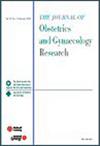The impact of androgens on pregnancy and fetal outcomes in patients with polycystic ovary syndrome
Abstract
Introduction
Polycystic ovary syndrome (PCOS) is a complex endocrine disorder affecting approximately 20% of women of reproductive age. The impact of high androgen levels on pregnancy and fetal outcomes is complex and multifaceted, largely due to the heterogeneous nature of PCOS.
Materials and Methods
This prospective cohort study included 65 pregnant women diagnosed with PCOS (using the Rotterdam criteria) and 65 age-matched healthy pregnant controls at Harran University Hospital. Blood samples were collected at 18–19 weeks of gestation to quantify testosterone and sex hormone-binding globulin (SHBG) levels, and the free androgen index (FAI) was calculated. Demographic and clinical data were recorded, and obstetric complications and birth outcomes were analyzed, adjusting for potential confounding factors using multivariate analysis.
Results
Pregnant women with PCOS exhibited lower parity (1.8 ± 1.0 vs. 2.2 ± 1.3, p = 0.033), lower birth weight (2827.0 ± 579.3 g vs. 3059.1 ± 561.2 g, p = 0.022), and lower SHBG levels (67.8 ± 58.8 nmol/L vs. 125.3 ± 36.8 nmol/L, p <0.001). Conversely, they demonstrated higher BMI (31.1 ± 6.1 vs. 27.6 ± 5.1, p = 0.001), total testosterone (32.6 ± 14.1 vs. 26.1 ± 8.1, p = 0.009), and FAI levels (136.9 ± 128.2 vs. 31.2 ± 39.4, p <0.001). The incidence of complications such as intrauterine growth retardation (IUGR) and small for gestational age (SGA) was higher in the PCOS group, while the healthy birth rate was lower. The incidence of preeclampsia was also higher in the PCOS group. In the PCOS group, the FAI demonstrated a negative correlation with gestational week and birth weight (r = −0.376, p = 0.002), indicating that as these values increased, the FAI exhibited a corresponding decrease.
Conclusions
This study demonstrates the adverse effects of hyperandrogenism on pregnancy and fetal development in women with PCOS, highlighting the clinical significance of this condition. Further research is required to elucidate the underlying mechanisms of hyperandrogenism and to identify effective strategies to improve pregnancy outcomes in women with PCOS.





 求助内容:
求助内容: 应助结果提醒方式:
应助结果提醒方式:


